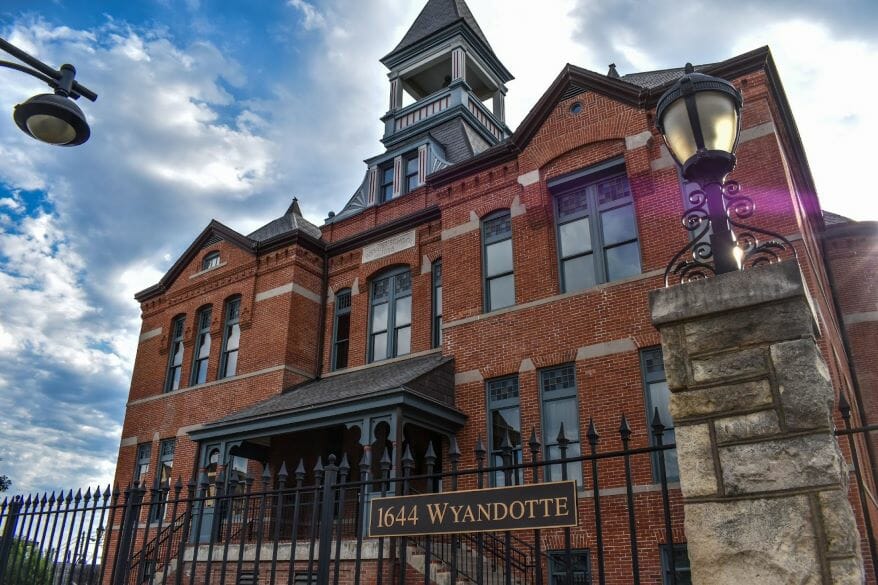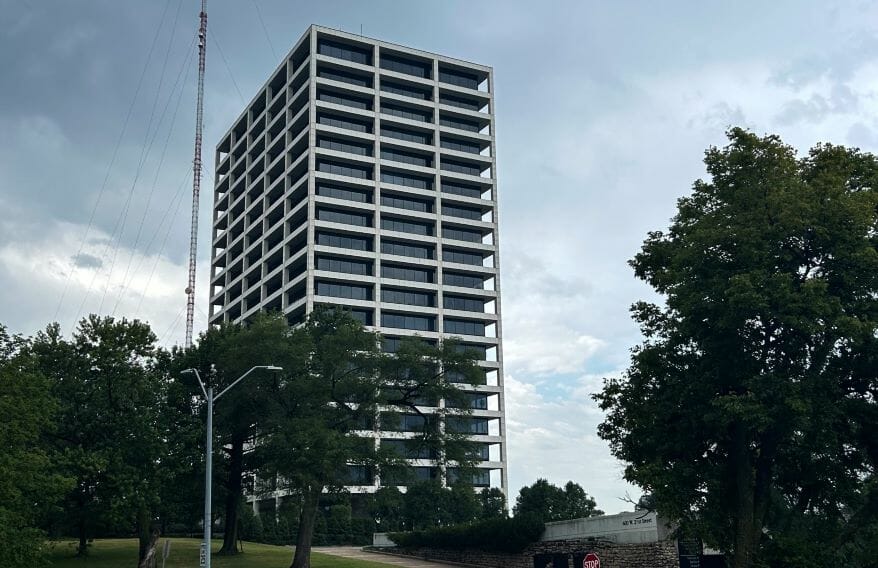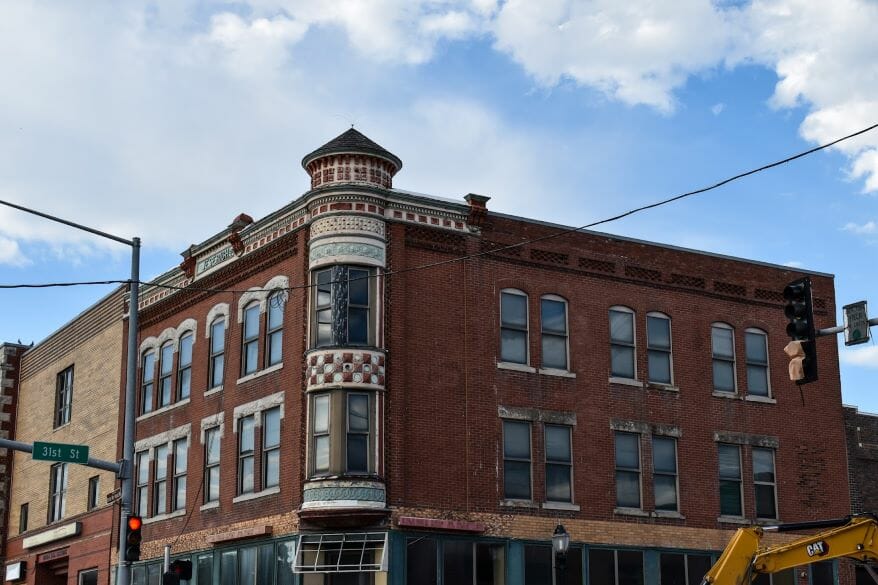The Way We Were: Mapping Historic Landmarks in Kansas City The City of Fountains has More Than 300 Sites on the National Register of Historic Places
Published July 19th, 2023 at 6:00 AM
Above image credit: Kansas City's downtown skyline with Union Station in the foreground. It is perhaps the most recognizable historic landmark in the region. (Contributed | Union Station/Kentadh Photography)Nestled in the Crossroads Arts District next to the Kauffman Center for Performing Arts sits the red-brick Webster School. The historic Webster is one of the few surviving Kansas City buildings constructed in the 1880s and built in the Richardsonian Romanesque style.
The 138-year-old Webster is one of the oldest school buildings in the city, according to its nomination form for the National Register of Historic Places. It is one of more than 300 historic sites listed on the National Register.

The National Register, the nation’s official list of historic places that are considered worthy of preservation, is maintained by the National Park Service, and has documented more than 95,000 properties throughout the country.
Kansas City’s historic sites are important to preserve because they help tell our story visually, said Brad Wolf, historic preservation officer for the City Planning Department.
“Every locality has their own community character and kind of its own story,” Wolf said. “These sites kind of tell the story of Kansas City — people that lived here, the times they lived in.”
In general, properties are eligible to be listed on the National Register 50 years after they are built. But Wolf said there are exceptions to that rule.
“Occasionally there are really prominent buildings that come up that are just kind of obvious,” Wolf said. “Whether it’s architectural work like, for example, the BMA tower there at 31st and Southwest Trafficway. When it was listed, it was actually less than 50 years old, but it was a good example of Skidmore, Owings & Merrill, which had a lot of buildings already listed on the National Register.”

Tax incentives are available for properties listed on the National Register. Wolf said there are two different tax incentives — a state historic rehabilitation tax credit and a federal tax credit.
“So the state tax credit is 25% of the rehabilitation costs. And really, it’s 25% of basically any money you would spend on the exterior or interior of the building that’s been rehabbed, back into a tax credit,” Wolf said.
“If you’re familiar with tax credits, it’s a little different than the tax deduction. The credit goes directly to how much you owe on your taxes, so they’re actually worth quite a bit. And then federal credit is 20% of the rehab cost. The difference between the two is the federal credit is lended to income-producing properties, so homeowners couldn’t use it actually … it has to be a business or a rental property, for example.”
In addition to the National Register, the Kansas City Register of Historic Places also documents historical locations significant to Kansas City’s history. The Kansas City Historic Preservation Commission oversees the city register, which provides an extra layer of regulation, Wolf said.
“So with the Kansas City Register any exterior change to properties either individual or within the historic district has to meet the Secretary of Interior standards for rehabilitation and are reviewed and approved by the Historic Preservation Commission,” Wolf said. “The idea behind that is to preserve the community character.”
The local designation also can be used to delay demolition of a historic building for three years, Wolf said.
More than 100 locations have been cataloged in the Kansas City Register of Historic Places, and more than 40 of those also appear on the National Register. Notably, the Country Club Plaza does not appear on either list.
Tour KC’s Historic Sites
Here are closer looks at a few of the locations on the registers.
18th & Vine Street Historic District
Kansas City’s 18th & Vine Historic District has long been hailed as an influential location in the development of jazz. The district is home to the American Jazz Museum and also is the location of the Negro Leagues Baseball Museum. The district was listed on the Kansas City Register in 1983 and on the National Register in 1991.

31st & Main Historic District
One of the newest entries on the Kansas City Register, the 31st & Main Historic District, was declared a historic landmark in late 2022 after a developer announced plans to demolish the buildings. One of the buildings sitting along the block is the Jeserich Building, which was constructed in 1888.

Scarritt Building & Scarritt Arcade
These buildings are on both the Kansas City Register and the National Register of Historic Places. The Scarritt Building, located at 818 Grand Blvd., is the city’s second “skyscraper,” according to an article in Northeast News. The buildings were listed on the National Register in 1971 and the Kansas City Register in 1987.

Green Duck Tavern
The tavern’s history is closely intertwined with Leon Jordan, a civil rights activist, elected official and the first African American to hold the title of Lieutenant in the Kansas City Police Department.
Jordan owned and operated the tavern, according to the African American Heritage Trail. During his lifetime, Jordan also organized a police force in Liberia, founded the political organization Freedom Inc. with Bruce Watkins and was elected to the Missouri House of Representatives. He was killed outside the tavern in 1970.
The tavern is now closed, but the building still stands at 2548 Prospect Ave. Green Duck Tavern was added to the Kansas City Register in 2015.

Sophian Plaza
The Sophian Plaza, located at 4618 Warwick Blvd., opened in 1923. According to its website, the building’s design borrows from the Italian Renaissance style and includes Greek and Roman elements. A number of notable people have resided at the building. It was listed on the National Register in 1983 and on the Kansas City Register in 1986.

Julie Freijat is a Dow Jones reporting intern at Kansas City PBS. She is a masters student at the University of Missouri.


